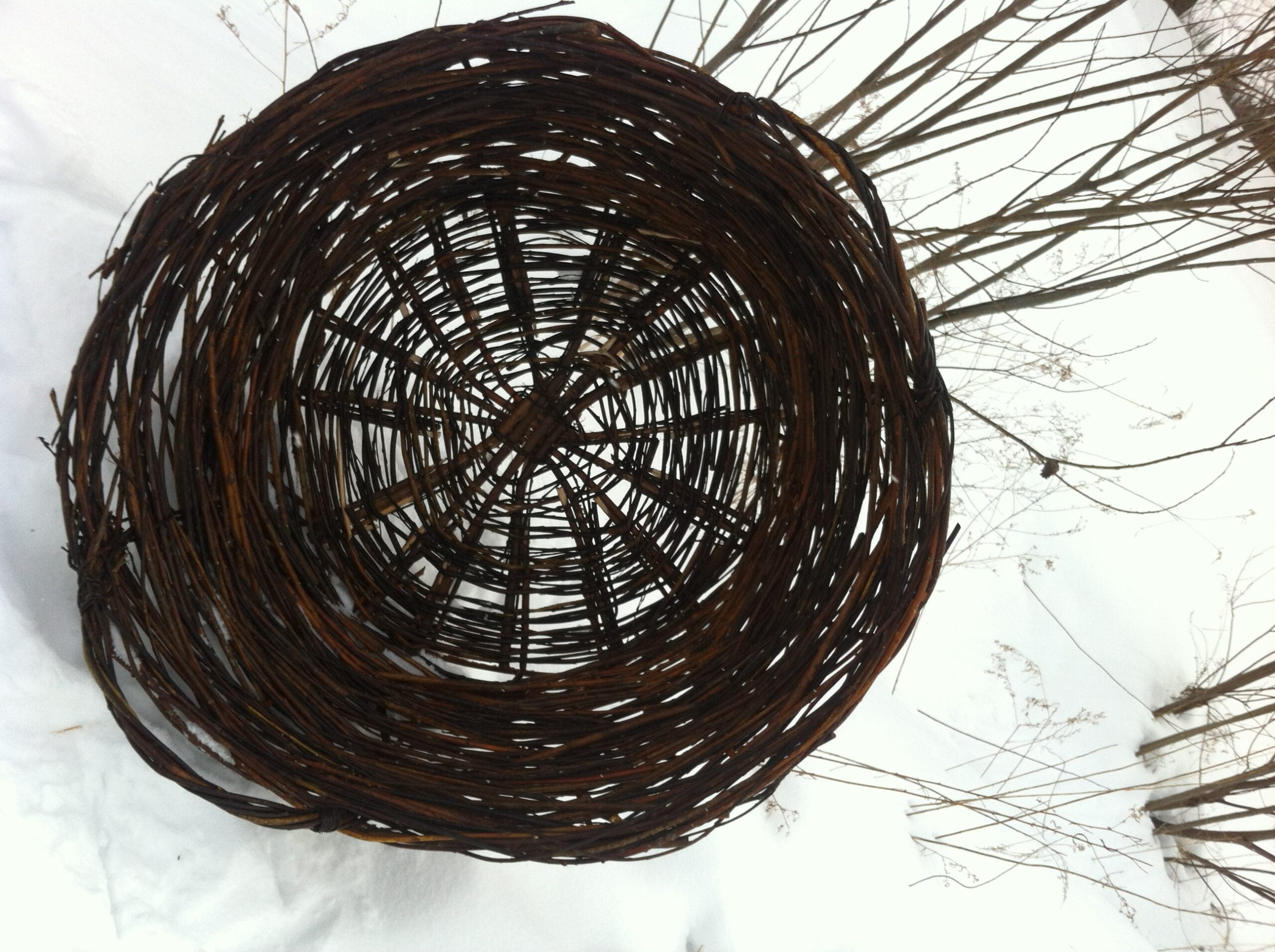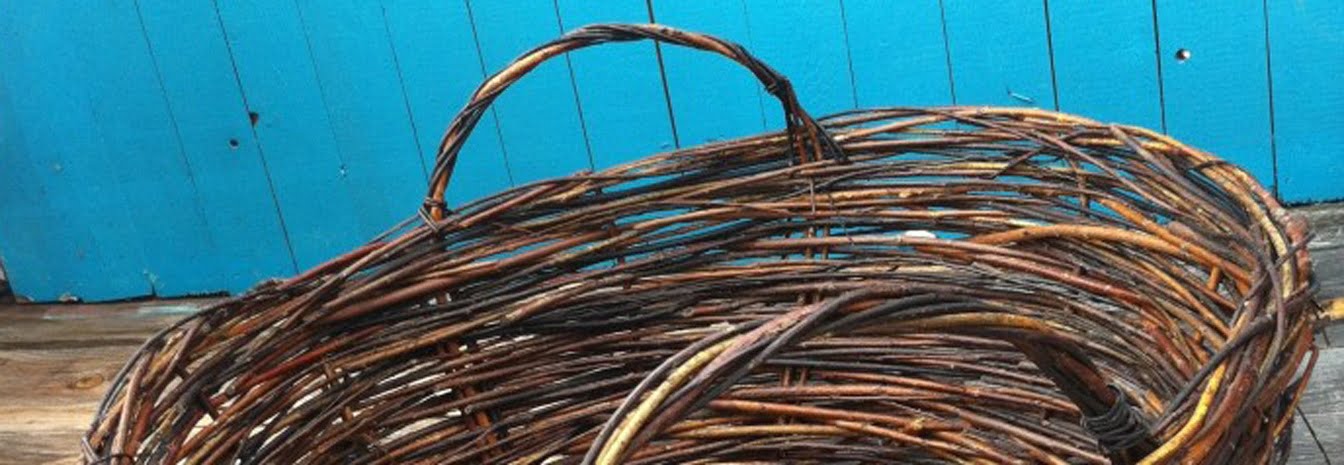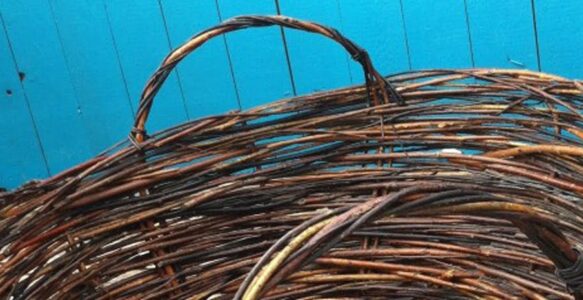

|By Steven Martyn|
It’s early March and coming into the cane harvesting season. Megan and I have been prayerfully coppicing the same Willow trees for a few years, but I seldom seem to have the time to actually use the canes for their intended use—furniture and baskets. But this year I promised the trees I would use them before I harvested more. So this February I did.
I’ve always wanted a large shallow harvest basket, and even if I’d wanted to buy something like that I can’t ever find the right shape. Most large baskets that I’ve seen are too deep (designed for dirty laundry), and expensive. Because they’re too deep the harvested materials get crushed, can’t breathe and you can’t keep an eye on them if they’re being stored in the basket.
I’ve made some small baskets before but it was almost twenty years ago, so I’m a little ashamed to admit it but I looked it up online. I’m not one for following instructions, and I hate leaving the computer and the Wi-Fi plugged in so I read it over for a couple tips and the started in on the journey myself.
With the odd thing in life, like baking, it’s good to follow instructions, at least the first time. But I have found over and over that with most things you learn so much more and can integrate and claim the knowledge in a deeper way when you learn it as you go from the materials and process itself.
 There are a few teachings I rediscovered, that I love, and that I have experienced when creating many Native forms, from sweat lodges to tipi’s. I use the word Native here because I believe these teaching are universally indigenous and not just relevant to forms made by First Nations people on this continent. Certainly indigenous people on every continent have made Willow baskets or some equivalent for hundreds of thousands of years.
There are a few teachings I rediscovered, that I love, and that I have experienced when creating many Native forms, from sweat lodges to tipi’s. I use the word Native here because I believe these teaching are universally indigenous and not just relevant to forms made by First Nations people on this continent. Certainly indigenous people on every continent have made Willow baskets or some equivalent for hundreds of thousands of years.
The first thing I love and feel is distinctly different from the “modern” paradigm and construction methods is the level of intimacy that is demanded with each piece involved in the creation of what your making. And that each piece is allowed to be unique, and is worked with in that capacity. In modern building everything is expected to be uniform and testable to certain stress factors etc…. This is not the way when we are really working with the Earth.
The second thing I love is how these structures all start off in such a flimsy way, which is also so very different form the steal and concrete ways of today. The real teaching here is that while all the pieces in a basket, tipi or lodge are in themselves week and flimsy, when they are joined they create an incredibly strong and flexible form. The lesson being that this is also true of us as humans, there is great strength and flexibility in surrendering our individuality and joining with others.
And the last lovely thing about these Native constructions is that because they came from the Earth without any high tech processing or additives, when it busts beyond being fixable, it can be given back to the Earth with zero negative consequences. Part of this last teaching that is also very different from the modern ideal is that it is built with this “end use” in mind, it is not meant to last forever.
What was taken is given back with interest, the love and stories the broken basket still contains.


